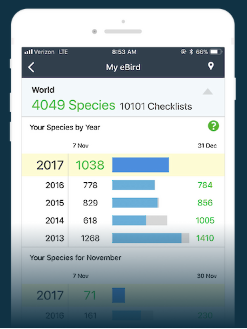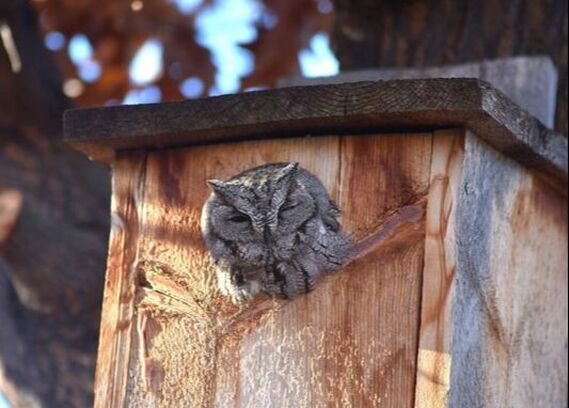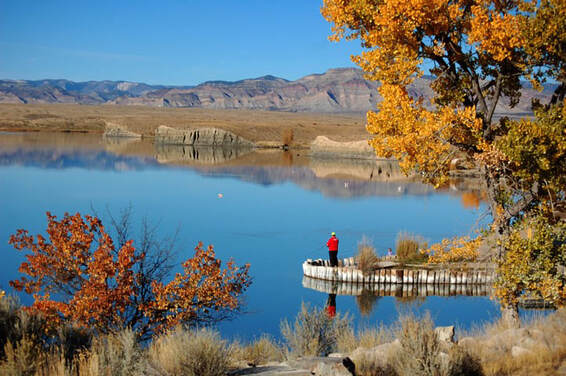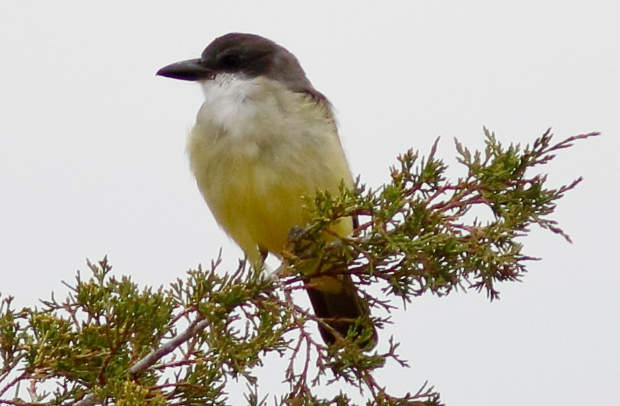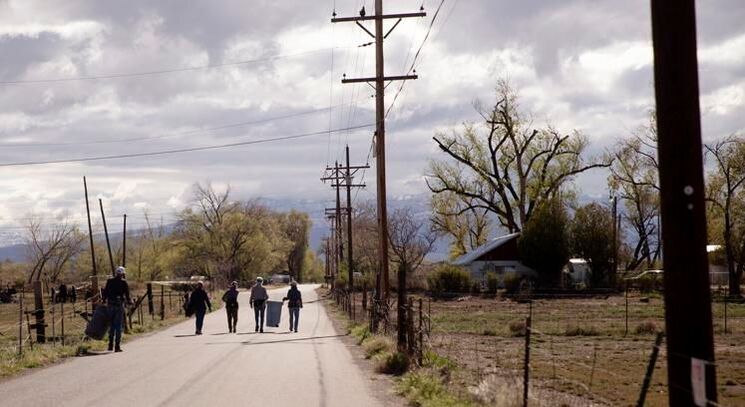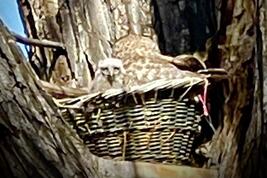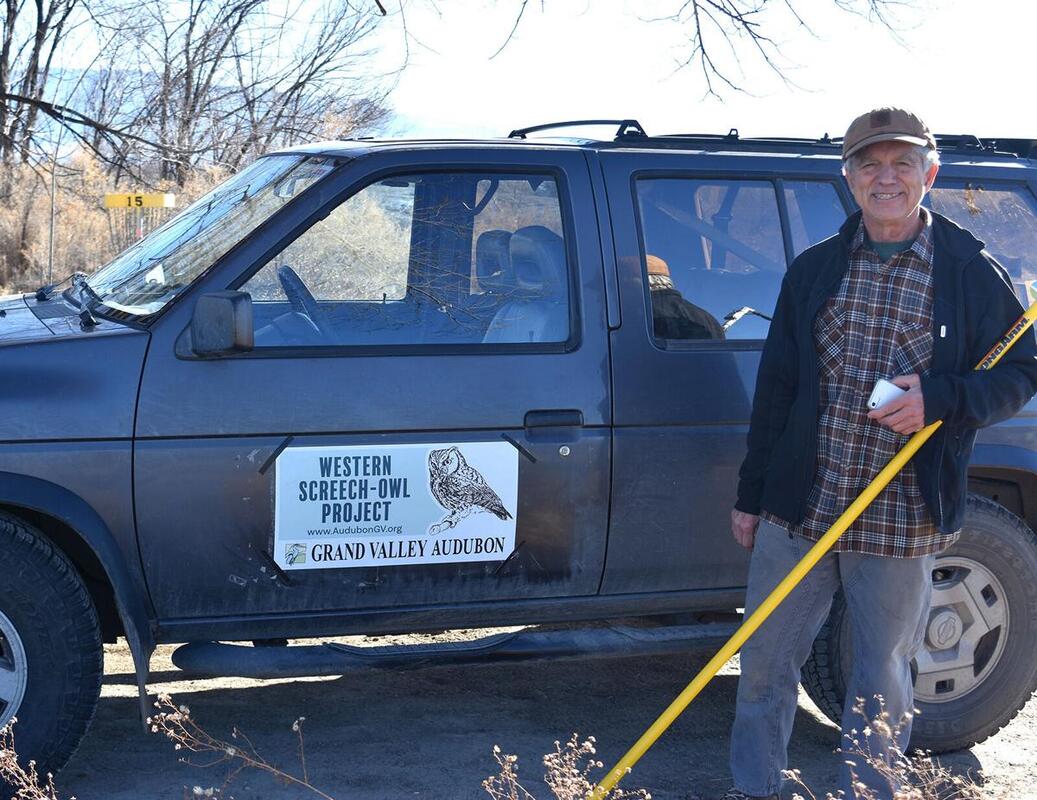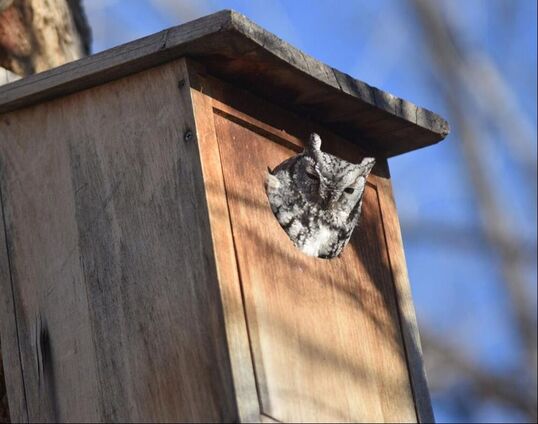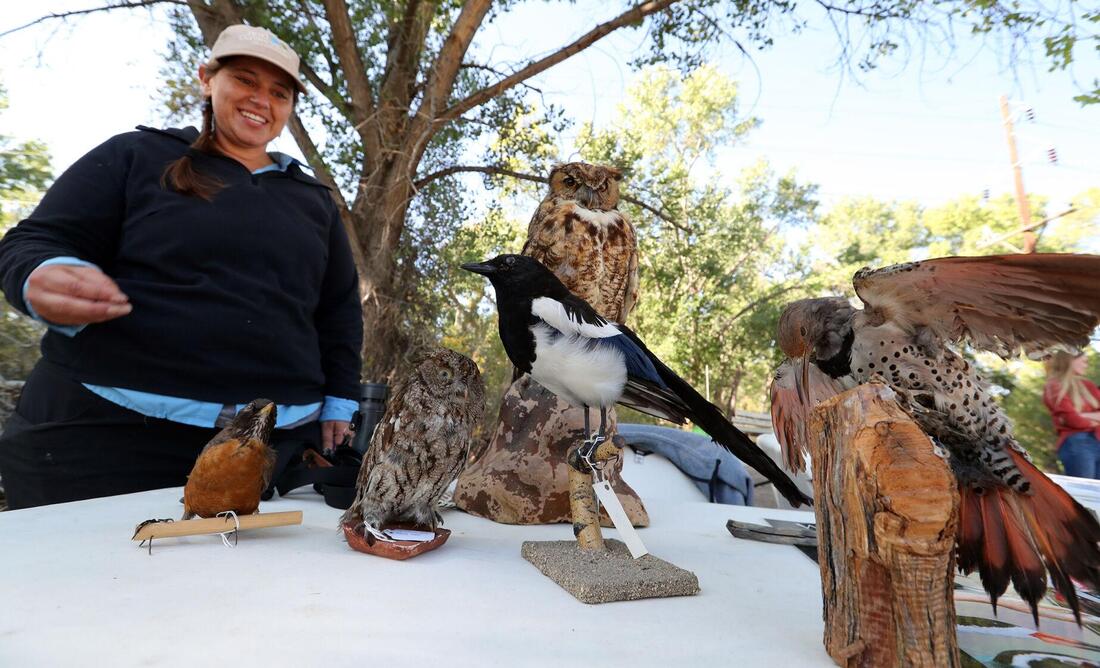NOTABLE BIRD NEWS.....
Link to Christmas Bird Count - Historical Data. The codes for our two are COGJ and COGM
Apps to help you make the right birding call in Grand Valley
|
To say Logan Wagner is enthusiastic about birding would be an understatement.“I’ve been doing this since I was in diapers and I’m 26 now,” said Wagner, who is a board member with the Grand Valley Audubon Society. He definitely has an opinion about birding apps and here are three of his favorites.
MERLIN BIRD ID Merlin Bird ID is from The Cornell Lab of Ornithology, which known for its bird research and resources for birders.It has a Sound ID feature that is to bird calls like Shazam is for music, Wagner said, referring to the app that identifies music based on “hearing” a short sample of a song.When downloading Merlin Bird ID, you’ll receive a prompt to download a specific bird pack for a specified area of the world.Grand Valley residents will want the “US: Rocky Mountains” pack that will make the app more specific to our area and more accurate, Wagner said. Fall is a great time to use this app because of bird migration, and it’s also handy because certain birds won’t be sporting their breeding plumage and therefore could be more difficult to identify by sight, he said. RAPTOR ID Not sure if you’ve got a Cooper’s hawk or a sharp-shinned hawk in your backyard? They have similar coloring and are roughly the same size and shape, which can make them difficult to tell apart. That is where Raptor ID comes in and allows for some “nitty gritty IDs to do that are kind of fun,” Wagner said. Raptor ID is from Hawk Watch International, and it could be a helpful tool if you were to decide to join the society’s Tumacnbac (to Mack and back) raptor field trips in January and February, he said. EBIRD “Merlin is like the gateway drug to eBird,” Wagner said about eBird, which also is from The Cornell Lab of Ornithology. While identifying birds is exciting and fun, “the big thing is data,” he said. The eBird app allows the user to list the birds – species and numbers – they have seen and then places that information into a database. With hundreds of people recording and submitting information, “you get to see local and regional trends,” he said. And since birds are an indicator species, the tracked information over time can help to show what is happening in the environment, he said. While apps are valuable and even a good bird identification book from the library can be helpful, the best way to learn about birds and birding is to “just go out with more experienced birders,” Wagner said. A couple options for doing just that are coming up on September 23, 2023 through the Grand Valley Audubon Society. > From 7:30–10:30 a.m. on Sept. 23 there will be the public Bird Banding Day at the Audubon Nature Preserve, 610 Dike Road. During those hours members with the society will be catching, counting and banding various species of migratory birds. > And then from 8 a.m. to noon on Sept. 23 will be the GVAS Bioblitz, when experts and novices will photograph and identify as many species as they can in a certain area. For information on these events and others planned by the society, as well as information about the society itself, go to audubongv.org. |
Local birders count record number of screech owlsBy DENNIS WEBB / [email protected] / 12/29/22 Grand Junction Media, Inc.
The western screech owl makes a call that doesn’t align with the bird’s name, sounding more like what local birder Nic Korte calls a “bouncing ball trill.” But while the little owl, which Korte says weighs only about 5 ounces and is about the size of a soup can, doesn’t actually screech, much less screech for attention, it still gets plenty of attention from Grand Junction birding enthusiasts each December. On Dec. 18, more than 40 volunteers with the Grand Valley Audubon Society counted 101 western screech owls, based on audio or visual confirmation. That’s up from about 70 during the local count a year ago, according to past Daily Sentinel reporting. Korte said it’s also a national record for western screech owls counted in a day, and thus a world record because the bird’s range is primarily in the United States, with fringe range also found in Canada and Mexico. National Audubon Society Christmastime bird counts are held in numerous locations each year. Korte, conservation chairman for the Grand Valley Audubon Society, said that when bird count compilations are done, Grand Junction almost certainly will be number one in the world for the 12th year out of the last 13 when it comes to western screech owls counted in a day. “No one in the United States has come to close to us for years” in terms of counts of the bird, said Korte. He attributes that to local volunteer efforts, both in getting out to count the birds and putting up nest boxes with the cooperation of local landowners. |
Korte is manager of Grand Valley Audubon’s western screech owl project, which is unique in the United States. He said the western screech owl was once thought to be the same species as the eastern screech owl, which actually does screech. The two birds later were determined to be separate species based on differences in calls and things such as beak color.
Birds most often detected near nesting boxes placed by volunteers
Korte said western screech owl numbers are falling nationally due to urbanization and trimming and elimination of old trees the owls need for nest cavities. But he credits entities such as the city of Grand Junction, Mesa County, District 51 schools, housing subdivisions and local canal companies, along with private landowners locally, for agreeing to let volunteers put up nest boxes to help offset losses of local western screech owls.
“If it wasn’t for our boxes they wouldn’t have a place to be in a lot of the valley,” he said of the owls.
More than 70% of the owls counted this year were counted in or near local nest boxes. Unfortunately, Korte thinks the bird’s numbers are still falling locally. “But we’re counting more because we’re getting better at it,” he said.
The counting effort by the Grand Valley Audubon Society occurs in what Korte said is the Grand Junction Christmas Count Circle, a 15-mile-diameter circle centered at 24 and H roads. Korte said more than 40 volunteers got up before 5 a.m. on Dec. 18 to drive 17 routes within that area.
Most groups had 10 or more stops where they stepped out of their cars into the cold and played the western screech owl’s trill using a phone birding app. Fifty-three screech owls responded, some flying in to investigate the source of the call and others trilling softly in the distance, Korte said.
Ten volunteers spent part or all of the day using cameras mounted on poles to check more than 200 nest boxes, resulting in 46 more owls being found.
Then two more screech owls responded to calls in the evening. They were a couple of final stragglers, making sure to get their annual attendance taken by their human advocates.
Birds most often detected near nesting boxes placed by volunteers
Korte said western screech owl numbers are falling nationally due to urbanization and trimming and elimination of old trees the owls need for nest cavities. But he credits entities such as the city of Grand Junction, Mesa County, District 51 schools, housing subdivisions and local canal companies, along with private landowners locally, for agreeing to let volunteers put up nest boxes to help offset losses of local western screech owls.
“If it wasn’t for our boxes they wouldn’t have a place to be in a lot of the valley,” he said of the owls.
More than 70% of the owls counted this year were counted in or near local nest boxes. Unfortunately, Korte thinks the bird’s numbers are still falling locally. “But we’re counting more because we’re getting better at it,” he said.
The counting effort by the Grand Valley Audubon Society occurs in what Korte said is the Grand Junction Christmas Count Circle, a 15-mile-diameter circle centered at 24 and H roads. Korte said more than 40 volunteers got up before 5 a.m. on Dec. 18 to drive 17 routes within that area.
Most groups had 10 or more stops where they stepped out of their cars into the cold and played the western screech owl’s trill using a phone birding app. Fifty-three screech owls responded, some flying in to investigate the source of the call and others trilling softly in the distance, Korte said.
Ten volunteers spent part or all of the day using cameras mounted on poles to check more than 200 nest boxes, resulting in 46 more owls being found.
Then two more screech owls responded to calls in the evening. They were a couple of final stragglers, making sure to get their annual attendance taken by their human advocates.
Highline park addition opens birding options
By RYAN BILLER | [email protected] | October 22, 2022
|
Highline Lake State Park will soon be 178 acres larger and much, much darker.
Alan Martinez, Highline’s park manager, discussed a recent land acquisition of 178 acres on the park’s west side last week, explaining the effort to increase both capacity and amenities. “Hopefully, if everything goes as planned, we may be breaking ground next November,” Martinez said. “The purpose of the purchase was to increase the capacity of visitors. With the additional property, it gives us the ability to almost double our capacity. Some of what we’ll be doing will be adding space to park as well as a potential campsite.” Martinez also discussed, to a crowd largely made up of members of the Grand Valley Audubon Society, the ample opportunity for birding. “The park is a great location for birding,” Martinez said. “We have well over 200 different bird species at the park. The ability for people to view the birds here is easy. You can view great locations from your car, so that is good.” According to Martinez, some of the best bird viewpoints can be observed from a person’s car, making it far more accessible to a larger volume of people, including those with disabilities. Highline also has a raptor monitoring group, which has been active for the past nine years. Martinez said the purpose of the group is to help locate raptor nests in the park so that officials can take proper conservation measures. On the 178-acre parcel of land, Martinez said the group has located two raptor nests and are monitoring the location. |
A man fishes from the shore at Highline Lake State Park. Colorado Parks and Wildlife purchased a 178-acre piece of land next to the park to expand recreational activities. Highline Lake stock photo.
|
The purpose of the purchase was to increase the capacity of visitors. With the additional property, it gives us the ability to almost double our capacity." — Alan Martinez, Highline Lake |
“We’ve always known we’ve had a number of bats at the park. In 2021, our resource stewardship program conducted an acoustic bat survey at Highline which gave us the ability to hear what type of bats are in the park,” Martinez said. “We were shocked when 18 of the 19 bat species known to Colorado were recorded at Highline.”
Artificial lighting tends to have a negative impact on bats. While some lights attract insects, a common food source for smaller bats, most bats are morevulnerable to predators when there is a high density of light pollution, according to the Australasian Bat Society. “We knew with this large number of bats we would need to work on being dark sky certified,” Martinez said. “We don’t have a major issue with artificial lighting, but we got a grant from Colorado Parks Foundation to convert what lights we do have at our property to be dark sky certified. “If you’re ever out at Highline at night, the sky is amazing out here,” Martinez said. “There’s a lot of exciting things happening over here.” As seen in the Grand Junction Daily Sentinel. |
Rare sighting - Thick-billed KingbirdBy Megan Jones Patterson | October 27, 2022
The afternoon of September 21, 2022 was very gray with some rain. Linda Chittum and Ada Jones were driving country roads near Mack, Mesa County, Colorado looking for any birds that may be around on a dreary day. They saw 21 species that day but one was a clear highlight. Read on to hear Linda Chittum describe finding a Thick-billed Kingbird (Tyrannus crassirostris). The Sighting We were driving down a quiet county road and had stopped at the top where there are some cottonwoods to look and listen a few minutes. Nothing caught our attention so we started driving down the hill slowly. We spotted birds perched in a cottonwood snag on the left side of the road. Even without binoculars, there was an obvious outlier; I asked Ada to stop. Link to article: https://cobirds.org/unique-sighting-tbki/ Thick-billed Kingbird |
|
Audubon Rockies is working with its community to strengthen Colorado’s Water Plan for birds and people. We have this one opportunity to influence the new water plan and we need help from everyone.
|
It's time to dive into the Colorado Water Plan!
The plan update is being drafted now and will direct water management in Colorado for the next ten years. Audubon Rockies needs your help to shape a more water-resilient future for birds and people. Add your name to the petition before time runs out! https://act.audubon.org/a/colorado-water-plan-update
The Colorado Water Plan is undergoing its first update and will direct water management for the next ten years. With the uncertainties of climate change and declining water supply, our help is needed now more than ever. We are circulating a petition to bring Coloradans together and commit to a sustainable water future – for birds, rivers, and people. Abby Burk, western rivers regional program manager, will personally present your petition signature to the Colorado Water Conservation Board during the state meeting September 20-21st. Thank you for your commitment and hard work to support birds and their habitats. |
Grand Valley Bird Enthusiasts Eye Conservation / Education
|
Spring Bird Count – The Christmas Bird Count is one of the biggest events for Audubon society groups around the nation, but there is also a spring bird count.
On May 14, 2022 the GVAS will divide Mesa County into 12 areas with leaders and volunteers will look for birds and gather data. Mesa County is home to upwards of 350 bird species, but ongoing habitat loss as a by product to city development, which has been compounded by the effects of climate change, particularly drought, has threatened the future well-being of many of these birds. Read more.... Volunteers with the Grand Valley Audubon Society walk to a conservation easement on Dike Road near the Audubon Nature Preserve to clean up trash on Saturday, April 23, 2022. Photo by Mckenzie Lange - The Daily Sentinel. |
Grand Junction's Newest Resident - Baby Great Horned Owl
|
Please welcome a new kid to the neighborhood. Here's your chance to meet the newest resident of Grand Junction, Colorado's Riverfront Trail.
If you've ever walked the Audubon portion of the Riverfront Trail, you've probably seen people staring upwards at a tree not too far from the trailhead. Well, this is who they're looking at. The Owl's Nest is a Grand Junction Colorado Landmark on the Riverfront Trail as it sets out from the Safeway shopping center off of Broadway, and you'll spot this nest right off the trail. Everyone stops to look at the nest to see if anyone is home. |
This last weekend, Grand Junction residents got a peek at the new baby Great Horned Owl. Bird lovers have known for some time that babies were on the way. Recently, a handful of enthusiasts were able to catch an image or two.
A Little Info About the Great Horned Owl: it's my understanding there are a total of four Great Horned Owl nests along the Audubon portion of the trail. To date, I've only seen two with my own eyes. According to All About Birds; With its long, earlike tufts, intimidating yellow-eyed stare, and deep hooting voice, the Great Horned Owl is the quintessential owl of storybooks. This powerful predator can take down birds and mammals even larger than itself, but it also dines on daintier fare such as tiny scorpions, mice, and frogs. It’s one of the most common owls in North America, equally at home in deserts, wetlands, forests, grasslands, backyards, cities, and almost any other semi-open habitat between the Arctic and the tropics.
How to Find the Nest: Let's use Chow Down Healthy Pet Supplies at 2500 South Broadway as our starting point. You can park right along this portion of the Riverfront Trail. From there, take the trail heading west. You'll pass behind the plaza housing Golden Fights Gym and S.O.A.R. From there, continue heading west on the trail until you pass the Redlands Power and Water facility south of the canal. The total distance from Chow Down to the tree containing the nest is just over 2,000 feet. In other words, it's not that long of a hike and is well worth the effort.
Read More: Welcome the Newest Resident to Grand Junction's Riverfront Trail | https://95rockfm.com/owl-baby-grand-junction-riverfront/?utm_source=tsmclip&utm_medium=referral
A Little Info About the Great Horned Owl: it's my understanding there are a total of four Great Horned Owl nests along the Audubon portion of the trail. To date, I've only seen two with my own eyes. According to All About Birds; With its long, earlike tufts, intimidating yellow-eyed stare, and deep hooting voice, the Great Horned Owl is the quintessential owl of storybooks. This powerful predator can take down birds and mammals even larger than itself, but it also dines on daintier fare such as tiny scorpions, mice, and frogs. It’s one of the most common owls in North America, equally at home in deserts, wetlands, forests, grasslands, backyards, cities, and almost any other semi-open habitat between the Arctic and the tropics.
How to Find the Nest: Let's use Chow Down Healthy Pet Supplies at 2500 South Broadway as our starting point. You can park right along this portion of the Riverfront Trail. From there, take the trail heading west. You'll pass behind the plaza housing Golden Fights Gym and S.O.A.R. From there, continue heading west on the trail until you pass the Redlands Power and Water facility south of the canal. The total distance from Chow Down to the tree containing the nest is just over 2,000 feet. In other words, it's not that long of a hike and is well worth the effort.
Read More: Welcome the Newest Resident to Grand Junction's Riverfront Trail | https://95rockfm.com/owl-baby-grand-junction-riverfront/?utm_source=tsmclip&utm_medium=referral
Counting owls is always a hoot
By FRANK WITOWSKI, Jr. Special to the Sentinel Dec 21, 2021
|
Nic Korte spearheads the Western Screech-Owl Project on the Western Slope. Photo by Dale Shrull.
For Nic Korte, the Christmas Bird Count is an annual ritual.
Every year around the Grand Valley during the Christmas season, it’s time to count the number of western screeching owls. Korte, who works on the owl monitoring project for the Grand Valley Audubon Society, says the Christmas Bird Count has been ongoing in Mesa County since the 1950s, but it originally started 126 years ago. “Back in the old days, everyone would go out in Europe after Christmas and would shoot everything,” Korte said. “The Christmas Count became an antidote at that time.” On Sunday, Korte and a number of volunteers roamed the area counting western screeching owls. They concentrated on a 15-mile area from H to 24 roads. This assessment can provide data on bird population trends. Korte said the organization wants to keep these rare birds living in the Grand Valley. The Grand Valley Audubon Society uses western screech owl nest boxes, similar to the natural cavity habitats owls live in, to provide the species a home. Korte said the western screech owl nest boxes are made by volunteers to keep a high population of owls living in Mesa County and to give them new places to live, especially as natural habitats are lost. “Even with that (owl boxes), the numbers have dropped probably,” Korte said. Because they are nocturnal, you will rarely hear an owl sing or communicate during the daytime. |
An owl catches some sun in a box off F1/2 Rd. Photo by Dale Shrull.
Korte said about 200 owl boxes are spread around the Grand Valley. Using a makeshift adjustable camera pole, he peeks inside the boxes to confirm if an owl is inside.
The owl box was necessary to maintain a healthy habitat because so many large old cottonwood trees were eliminated over the years, Korte said. In past years, the dedication of volunteers counting western screeching owls, along with the installation of owl boxes, have led to Mesa County leading the nation in the number of owls counted during the Christmas Bird Count. This year’s owl count revealed approximately 70 owls in the area. Korte visited many places, including the home of Redlands resident Margaret Schultz, during his search for western screech owls. Schultz immediately responded to Korte that “It (owl) was in the box the other day.” Schultz has lived in her Redlands home for 33 years and said having the owls “makes life interesting.” She said at one time, this area offered habitat to the most owls in the valley. She sees them frequently. “I bring neighborhood children to watch. It’s just a gift. I don’t have to go far away to see wildlife,” Schultz said. Korte said the organization started this owl monitoring project to study screeching owl patterns, but he also has enjoyed getting to know the area residents who provide a safe habitat for the rarer species of birds. |
Bird banding helps gather information on local habitat
By JAMES BURKY [email protected], Sep 28, 2021
- Alicia Bachman with the Bird Conservancy of the Rockies participated as a bird bander last weekend at the James M. Robb Colorado River State Park-Connected Lakes Section. She is shown here with taxidermy bird specimens. Photography: Christopher Tomlinson/The Daily Sentinel.
A white crowned sparrow zoomed through the shrubbery at the Connected Lakes section at James M. Robb Colorado River State Park on Saturday, probably off to rest or grab some breakfast.
All of a sudden, that’s when it hit — a soft net that trapped the young sparrow. It was those dang humans and bird bander Alicia Bachman. This was the second time in days they had caught the little sparrow.
“Look at that; he’s already banded. Looks like we caught him Tuesday,” Bachman said, flipping through her catalog of birds. “That tells us that it’s hanging out here.”
Bachman is with the Bird Conservancy of the Rockies and was at Connected Lakes studying the local birds, with help from the Grand Valley Audubon Society, an organization dedicated to preserving birds and bird education.
By working together, they can better understand bird habits, educate the public and restore natural habitats.
Bachman has 11 other nets like the one that caught the sparrow spaced around the park. Birds will fly and fall into the nets unharmed.
Every 30 minutes, Bachman made her rounds and checked each net for birds.
Story continued... click here.
All of a sudden, that’s when it hit — a soft net that trapped the young sparrow. It was those dang humans and bird bander Alicia Bachman. This was the second time in days they had caught the little sparrow.
“Look at that; he’s already banded. Looks like we caught him Tuesday,” Bachman said, flipping through her catalog of birds. “That tells us that it’s hanging out here.”
Bachman is with the Bird Conservancy of the Rockies and was at Connected Lakes studying the local birds, with help from the Grand Valley Audubon Society, an organization dedicated to preserving birds and bird education.
By working together, they can better understand bird habits, educate the public and restore natural habitats.
Bachman has 11 other nets like the one that caught the sparrow spaced around the park. Birds will fly and fall into the nets unharmed.
Every 30 minutes, Bachman made her rounds and checked each net for birds.
Story continued... click here.
|
|

